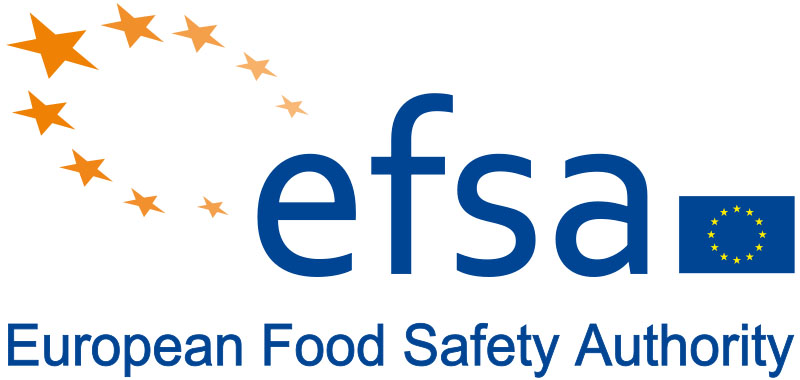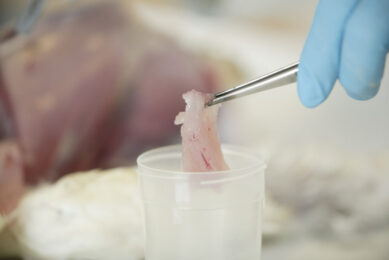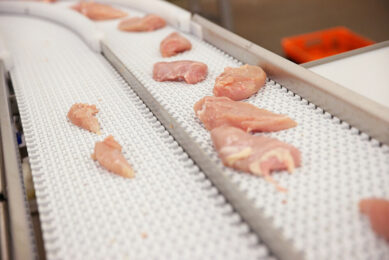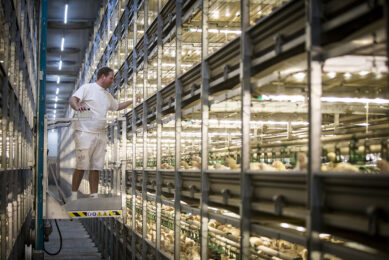EFSA: Public hazards to be covered in inspection of poultry meat

Following a request from the European Commission to EFSA, the Panel on Biological Hazards (BIOHAZ) and the Panel on Contaminants in the Food Chain (CONTAM) were asked to deliver a Scientific Opinion on the public health hazards (biological and chemical, respectively) to be covered by inspection of poultry meat.
Briefly, these Panels were asked
• to identify and rank the main risks for public health that should be addressed by meat inspection,
• to assess the strengths and weaknesses of the current meat inspection methodology,
• to recommend inspection methods fit for the purpose of meeting the overall objectives of meat inspection for hazards currently not covered by the meat inspection system, and
• to recommend adaptations of inspection methods and/or frequencies of inspections that provide an equivalent level of protection.
In addition, the Panel on Animal Health and Welfare (AHAW) was asked to consider the implications for animal health and animal welfare of any changes proposed to current meat inspection methods.
The three EFSA Panels presented the following key conclusions and recommendations:
Biological hazards
For biological hazards, a decision tree was developed and used for risk ranking poultry meat-borne hazards (mainly in broilers and turkeys).
Campylobacter spp. and Salmonella spp. were considered to be of high public health relevance for poultry meat inspection.
Extended spectrum b-lactamase (ESBL)/AmpC gene-carrying bacteria were considered to be of medium to high (E. coli), and low to medium (Salmonella) public health relevance.
Data for ranking Clostridium difficile were insufficient, but based on the limited information available, the risk at the present time was considered to be low.
All other hazards were considered to be of low public health relevance.
Chemical hazards
Dioxins, dioxin-like polychlorinated biphenyls (DL-PCBs), and the banned antibiotics chloramphenicol, nitrofurans and nitroimidazoles were ranked as being of high potential concern; all other substances were ranked as of medium or lower concern.
Based on the low percentage of non-compliant results reported by the NRCPs for the studied period of six years, it was concluded that chemical substances in poultry are unlikely to pose an immediate or acute health risk for consumers.
Food chain information
As none of these are detected by traditional visual meat inspection, establishing an integrated food safety assurance system, achievable through improved food chain information (FCI) and risk-based interventions, was proposed.
This includes setting targets at carcass level and, when appropriate, flock level indicating what should be achieved for a given hazard.
Elements of the system would be risk categorisation of flocks based on FCI and classification of abattoirs according to their capability to reduce carcass faecal contamination.
It is proposed that post-mortem visual inspection is replaced by setting targets for the main hazards on the carcass, and by verification of the food business operator’s hygiene management, using Process Hygiene Criteria.
Chemical substances that might occur in poultry were ranked into four categories of potential concern based on pre-defined criteria.
Dioxins, dioxin-like polychlorinated biphenyls, chloramphenicol, nitrofurans and nitroimidazoles were ranked as being of high potential concern.
Chemical substances in poultry, however, are unlikely to pose an immediate or acute health risk for consumers. Sampling for chemical residues and contaminants should be based on the available FCI.
Integrate control programs
Moreover, control programmes should be better integrated with feed controls and regularly updated to include new and emerging substances.
Meat inspection is recognised as a valuable tool for surveillance and monitoring of specific animal health and welfare conditions.
If visual post-mortem inspection is removed, other approaches should be applied to compensate for the associated loss of information on the occurrence of animal disease and welfare conditions.
Extended use of FCI has the potential to compensate for some, but not all, of the information on animal health and welfare that would be lost if visual post-mortem inspection is removed.













